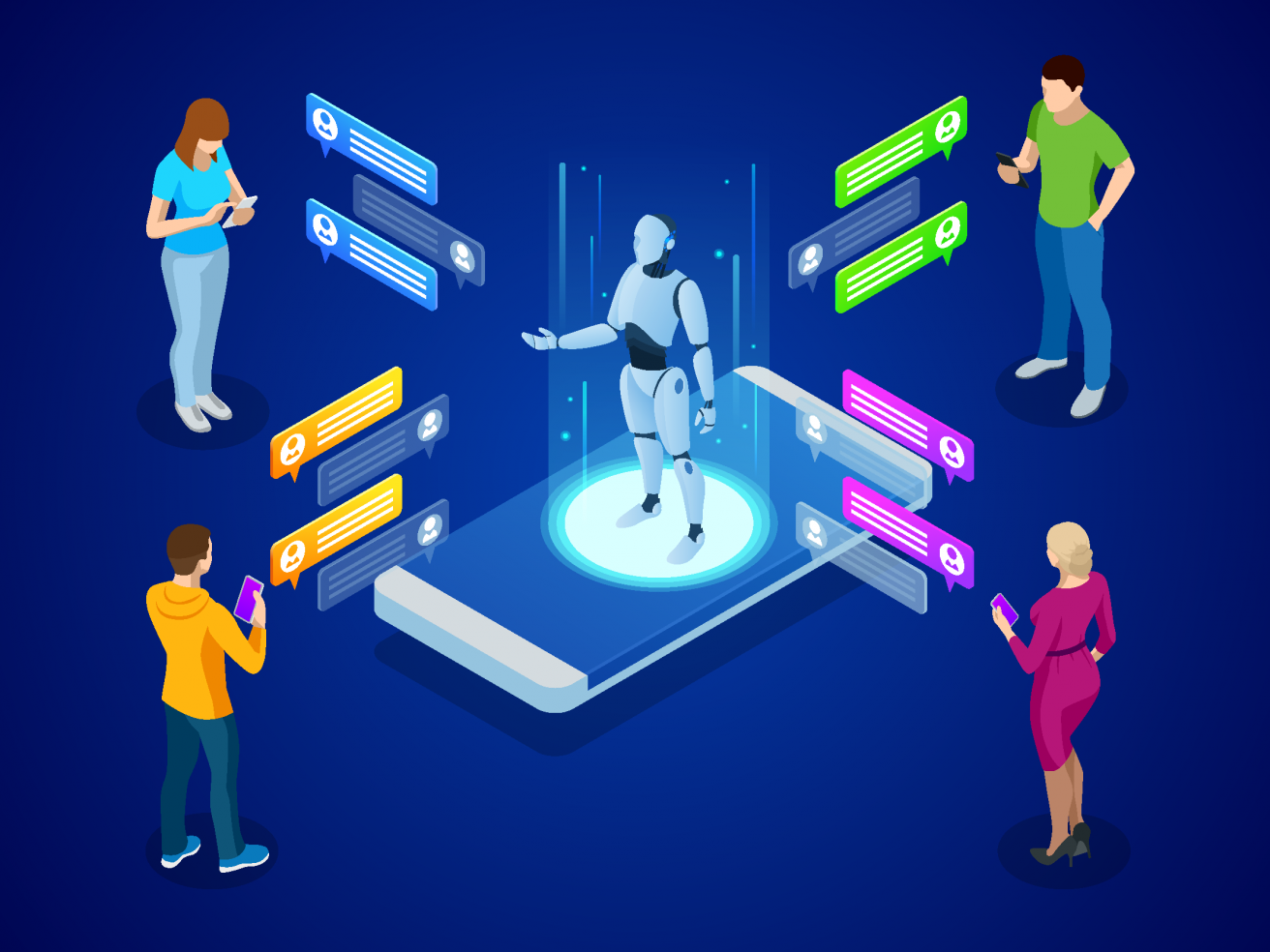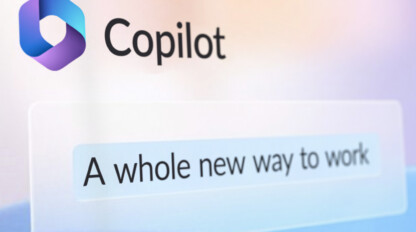What is Conversational AI?: Our Complete Guide for 2023

Artificial Intelligence (AI) and Machine Learning (ML) engines are evolving at an exciting pace, making integration with existing applications easier than ever. One of the most accessible concepts to start your AI journey with is a conversational AI engine. Most providers have had stable conversational AI offerings available since 2017, and the increased adoption has resulted in several feature and performance improvements. Today, I will review some easy and practical use cases for conversational AI, along with the mechanics used to make it all possible.
What is Conversational AI?
For years, conversational AI has transformed the way that businesses communicate with their customers, clients and partners. This adoption has resulted in an improved, natural experience for the customer, while delivering that experience more efficiently.
The recent innovations to these platforms can allow us to do much more than just provide menu-driven answers to common questions. Organizations can utilize these virtual assets as extensions of their staff by providing the engine with libraries of institutional knowledge and allowing the platform to fulfill the customer’s specific question or request dynamically. More importantly, we can empower our customer-facing staff by using an AI engine as the front end of triage operations. We can also direct the right question to the right person with the right information, improving the overall customer experience. This kind of technology opens the door for further innovation to optimize communication, both internally and externally.
How Does Conversational AI Work?
The modern chat bot that we are discussing today is powered by conversational AI and driven by a model of intent. Utterances, intents and variables are the foundation of the modern conversational AI engine. Here is how it works:
- Utterance: These bots need the customer to provide text or voice input describing their needs. This input is referred to as an utterance.
- Intent: The engine uses natural language processing (NLP) to cross-reference a library of utterances and institutional documentation to determine the customer’s intent.
- Variables: If variables are required for that specific intent, those are gathered as well with various response patterns. Different platforms use different terms for variables, but each has the same basic concept.
Once the intent is selected and all required information is gathered, the interaction leaves that specific bot. It moves on to an automation platform to either fulfill the customer’s needs or transfer to the correct human resource. Sometimes, the interaction would be transferred to another bot with a different goal in mind. Understand that different bots have different utterances and intents, but your application should make that transparent to your customer.
What are the Benefits of Conversational AI?
As conversational AI continues to evolve and align with more needs and technologies, we’ll see new benefits emerge. Right now, some of the most compelling benefits of conversational AI include:
- Increased accessibility
- Continued service outside of normal business hours
- Elimination of language barriers
- Helps guide customers through purchasing decisions
- Cost-efficient alternative to increasing workforce for demand (when applicable)
What is the Difference Between Conversational AI and a Chat Bot?
When we think of conversational AI platforms, we generally think of chat bots and virtual assistants that automate the real-time interaction with internal and external customers. These chat bots are not new to customer-facing interactions.
Traditional chat bot and IVR platforms relied on a flow-driven model. The bot or IVR would ask the user a series of questions in a deductive Menu Tree to find the action or transfer needed. While precise, this model can frustrate the customer and often does not provide the correct question for their specific need. It is exhausting, but not exhaustive.
Conversational AI, on the other hand, combines a variety of technologies to learn from every interaction. This means that it will listen, comprehend, react and formulate a response based on user behavior and store that data for future interactions. It can also be programmed with varying levels of complexity, offering a more sophisticated model to accommodate a wider array of use cases.
Types of Use Case
As brick-and-mortar businesses had to shift operations during the pandemic and in its wake, they needed alternatives to manage interactions previously handled in-person. These organizations frequently rely on customer service staff, including call centers and customer engagement specialists. Although the platforms that we are discussing today integrate with call centers and IVR products very easily, web-based chat is becoming the preferred contact method for customer service organizations. During the pandemic, average call hold times, call handle times and call abandonment rates more than doubled in many call centers.
If you have called any customer service number recently, you have probably been reminded that a chat function on the company’s web page is available for faster service. Conversational AI platforms have become critical for customer service engagement points. Every minute of customer engagement impacts the reputation of your product or service. Time spent waiting on hold for a call center agent is time that could be spent taking care of that customer’s needs.
A conversational AI front end should act as the first response to your customer service interactions. The primary goal of this front end is to analyze the chat or voice input provided by the customer and determine the intent of the customer’s request. From there, if the intent is something that can be fulfilled without human-centric channels, the engine will engage automated orchestration of integrated applications to fulfill the customer’s needs. If it is determined that the request requires human involvement, the engine’s goal will be to gather as much relevant information and transfer the interaction to right person. This is a very achievable use case that can be integrated with almost any customer interaction workflow.
6 Examples of Conversational AI in Business
Conversational AI can be leveraged in business across varying industries, countries and sizes to help improve customer experience. Below are a few examples of how organizations are leveraging the technology today:
1. Chat Window for a Virtual Storefront
A customer is logged into a virtual storefront and opens a chat window to engage the customer service organization. A chat bot takes this first interaction. Before the conversation even begins, the engine already has already gathered the customer’s identity and order history. The customer shares that an item on a recent order was missing. With these utterances, the bot immediately searches the most recent order numbers and finds the exact item in question.
From there, the bot can ask the customer if they would like a refund or prefer to find the status of the original order. A refund intent could be automated, and the interaction would be concluded without human interaction. If the customer wants to find a status of the missing item, a human interaction is likely needed, and the triage intent would be engaged. The interaction would be transferred to an agent with all customer and order information pre-populated to save the agent time in their investigation, and the customer will have their issue sorted out in real time.
2. Scheduling Appointments for a Business
Many businesses, like law firms, medical offices, salons, etc., may have a bot available for scheduling consultation appointments with their staff. There are many intents and utterances for different appointment types, each with their own set of variables. However, this type of interaction does not typically require a human resource to be engaged. Once the interaction is completed, the customer’s information is placed in the organization’s scheduling application database using a specific appointment type intent. There is also usually a feature that allows the user to add the appointment to their digital calendar, leaving a record that keeps both the business and the user accountable.
3. Phone System IVR for Front Desk Calls
A bot is integrated with a phone system IVR, and the customer interacts with voice input. There is likely a speech-to-text engine placed between the bot and phone system, but this is an easy integration point. From the moment the call hits the platform, the bot uses the calling telephone number to determine which customer is calling.
Let’s say this is an IVR front end to a hotel’s front desk. Based on the calling phone number, the bot determines which guest or room number the call is regarding. Utterances and intents are available for housekeeping, room service or reservation services. Items like housekeeping or room service use a series of variables to automate the request. For example, if the voice utterance is “I need some more towels,” a variable may respond and ask how many towels are needed, or what type of towels. While services like reservations may require human interaction, the intent can transfer to an ACD queue or hunt group to fulfill the customer’s needs.
4. Connecting Customers with the Right Employee
There’s nothing more frustrating than getting redirected several times while on the phone with customer service or feverishly yelling “representative!” into the phone when the automated choices aren’t enough. Conversational AI helps alleviate this frustration, learning the user’s problem or question they need answered then directing them to the proper contact for support. From there, the customer gets a direct answer, and the business resolves the case more quickly.
5. Lead Generation
Higher communication with your customer base leads to higher engagement. If handled properly, this engagement can lead to higher sales conversion. The implemented conversational AI will educate users on the product or service your business provides, skipping a step that would usually require an intro call with a sales rep. This helps get the user out of the “awareness” stage of the customer journey, and sometimes even through “consideration.” Ultimately, this feature can help close deals quicker.
6. Employee Training
In addition to using conversational AI for external clients, it can also help improve the way you interact with your internal clients. Using this feature during employee training helps streamline the onboarding process by automating the way information is shared and eliminating human error.
Adopt conversational AI for your customer-facing applications.
Nowadays, most organizations have the opportunity to adopt these kinds of features into their customer-facing applications. They give you a cutting-edge improvement for these interactions and can help automate parts of the business that don’t require human interaction, giving your team time back to focus on meeting your goals. If you are interested in adopting exciting new platforms for your organization, ivision can help you plan, implement and optimize that journey.



